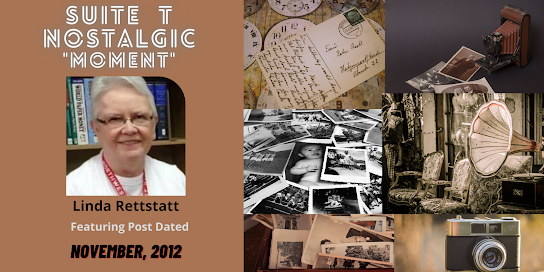My Little Hobby - or – How Friends and Family Sometimes Viewed My Writing
By Linda Rettstatt
When I first began to write seriously, I found myself alone and wandering in a new world. I had no writer friends and was not connected to any writing group. I just decided one day to give way to this desire that would not go away—the desire to write a book. I doubt I even believed I could accomplish such a task or produce anything readable. But I had to do it. Setting those first words down was like shaking a bottle of champagne and popping the cork. The rest just flowed.
I finished my first book in about four months. It was roughly written and not ready for prime time reading. But once I’d finished the book, one of my friends asked what I planned to do with it. Since the few people with whom I’d shared this new venture thought of it as my new hobby, I was reluctant to have anyone read the book. But what good is a book if it isn’t read?
I printed out three copies and gave them to friends. I was stunned by their responses. All encouraged me to seek publication. Now I was truly lost. I had no idea what to do next. Then it came to me—I needed an agent. (Remember, I was new to this whole writing and getting published thing and very naive.) I bought a copy of The Writer’s Market and sent out about twenty queries to agents. Within days, I began to receive my stamped, self-addressed envelopes back containing form letter no thank you notes.
Someone suggested I talk to an acquaintance who recently published with a small press. Her advice was to find a critique group, do a few rewrites, and then submit to an independent e-publisher. Since she had been published and I wasn’t, I thought it wise to take her advice. When I did submit my book, I received a contract offer within a matter of weeks. I was on my way to moving from ‘writer’ to ‘author.’
But it took a while for some of my family members and friends to catch up with me and understand just what that meant. For quite a while (a few years, at least), many of them still viewed my writing as a ‘hobby’—much like knitting or coin collecting. It was frustrating. Here I was being taken seriously in the publishing arena, and those people closest to me still thought writing was a way to spend a few hours and unwind after work. My day job demanded four days a week. Writing, which I’d already acknowledged as a passion and something I could no more stop doing than I could cease to breathe, consumed the rest of my days. It was not uncommon to spend up to fourteen hours straight on a weekend in front of the laptop.
After years of struggling to be taken seriously as an author, I learned the key—take yourself seriously. Announce yourself as an author. Surround yourself with people who understand and support your efforts. Connect with other authors. Take pride (not arrogance, but honest pride) in your work.
I have twelve novels published to date and four more due for publication in the coming year. I think it’s safe to say, this is more than a hobby. Some might say it’s an obsession J. When someone recently likened my writing to a hobby, I said, “Writing a novel is like hand-knitting your family’s entire wardrobe.”
I think she got the point.
Writing, no matter how much one enjoys doing it, is hard work if you do it well. Truthfully, writing is more demanding and exacting than my day job. I’m not complaining, though. Most of my family and friends have gotten on-board now and know that my writing is not to be compared to doing paint-by-numbers for hours on end. (My father’s hobby at one time.) They respect my work and seem to realize what it demands. As with any true passion, writing gives back so much more than it takes. That, I think, is when you know it’s the one true thing you should follow.
When you find that one thing you are deeply passionate about, embrace it. Own it. And don’t let anyone discount it’s worth.
Linda Rettstatt began her writing career at the tender age of eighteen while working as a classified ad clerk for her hometown newspaper. She covered the local community theater stories no one else wanted to cover, and she did so with enthusiasm, insisting upon a by line. Rettstatt’s creative nature steered her into a career as a semi-professional folk musician for a number of years. Finally, in 2002, she sat at a computer determined to find out if she could write a novel. That novel and three more were contracted by a small press. She moved from small press publishing to self-publishing in 2014 and has forty-one novels and novellas and several short stories in her bibliography. Her most recent novel is Tattered Hearts: A Second Chance Romance. Her Christmas short novelette, Christmas Present, will publish on November 15.
In April of 2021, Linda retired from her social work position in NW Mississippi and relocated back to her home state of Pennsylvania where she continues to write and to offer services as an editor and writing coach.
She can be found on the web at www.authorlindarettstatt and on Facebook at https://www.facebook.com/WritingForWomen



































